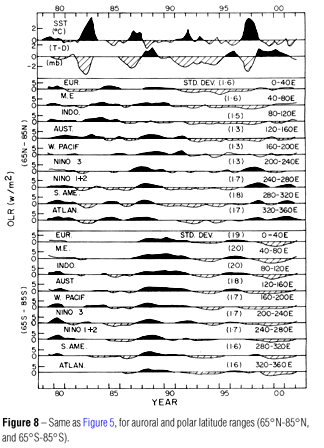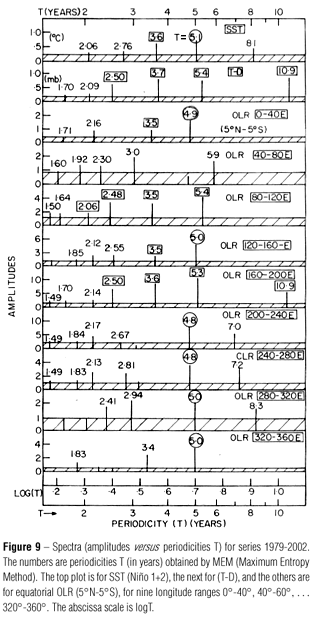A study of the Outgoing longwave radiation (OLR) values (Unit, W/m) observed by various satellites during 1979-2002 revealed that the OLR values varied considerably from one geographical region to another ( ~ 100-300 units). The climatology was latitude dependent. At middle and high latitudes, the range (minimum to maximum) was ~ 40-60 units, with maximum in local summer and minimum in local winter, but at lower latitudes, the range reduced considerably and was uncertain near equator. Near equator, the long-term changes (as seen in 12-month moving averages) were: OLR decreases during ENSO events in the eastern Pacific up to the dateline, and OLR increases during ENSO events in the Australasian region. Outside the equatorial region, the OLR changes were small during ENSO events and negligible in other years. In some longitudes at middle and high latitudes, the OLR changes occurred several months after the El Niño events, coinciding with La Niña (cold water events, opposite of warm water El Niño events).
spectra; OLR (Outgoing Longwave Radiation)










